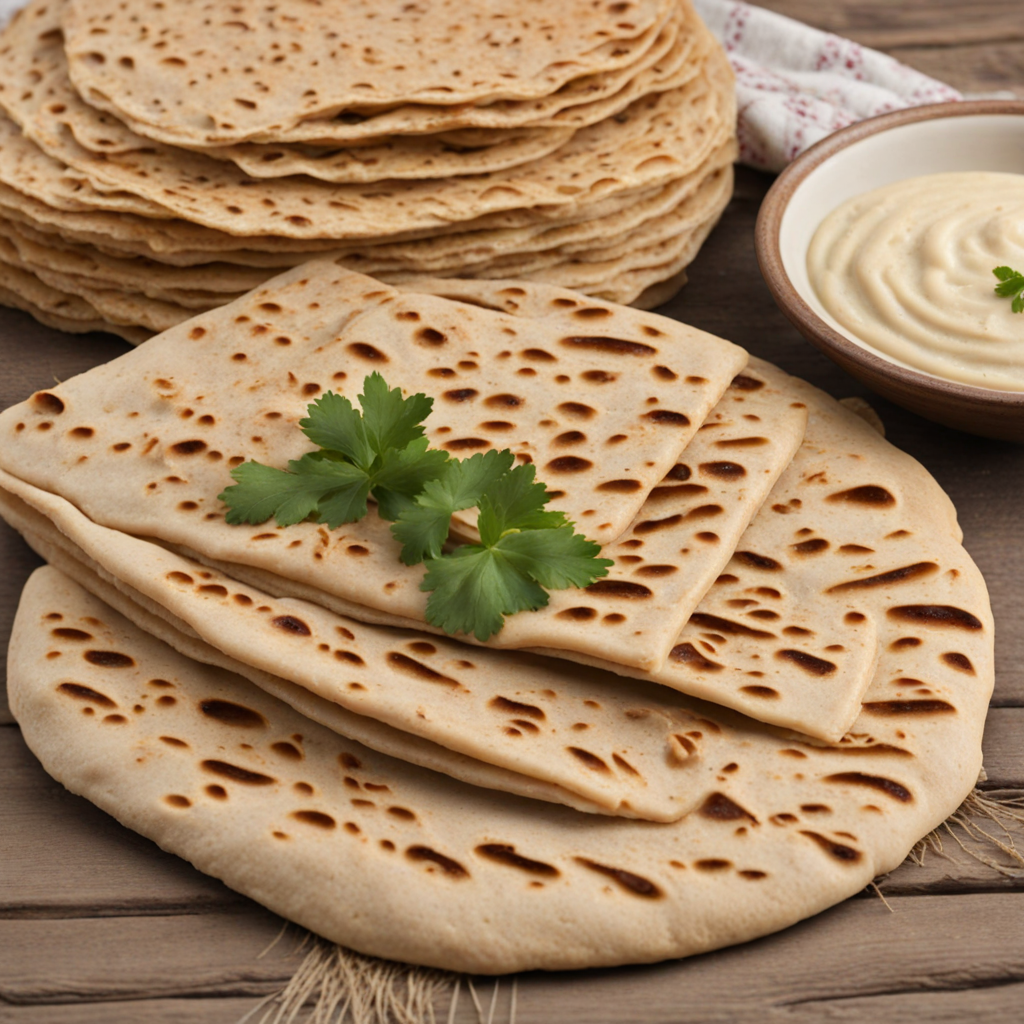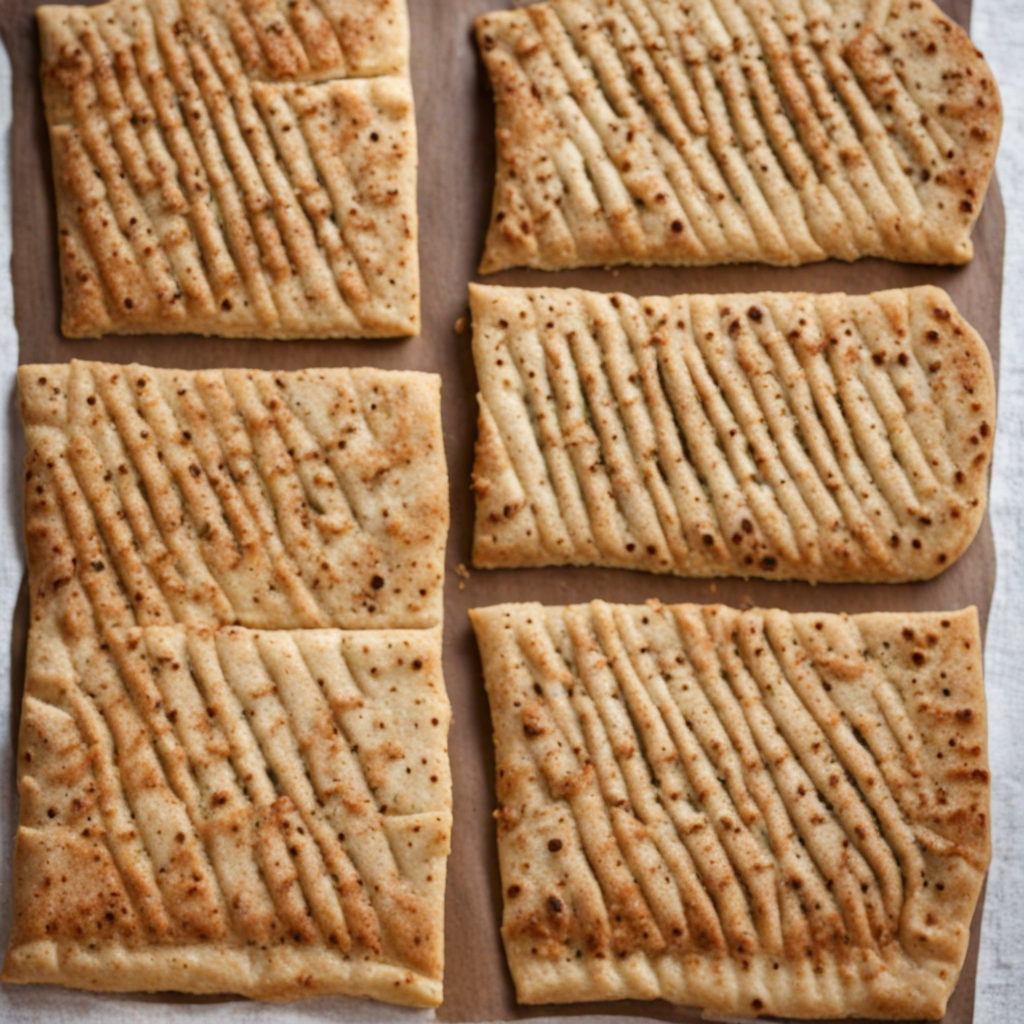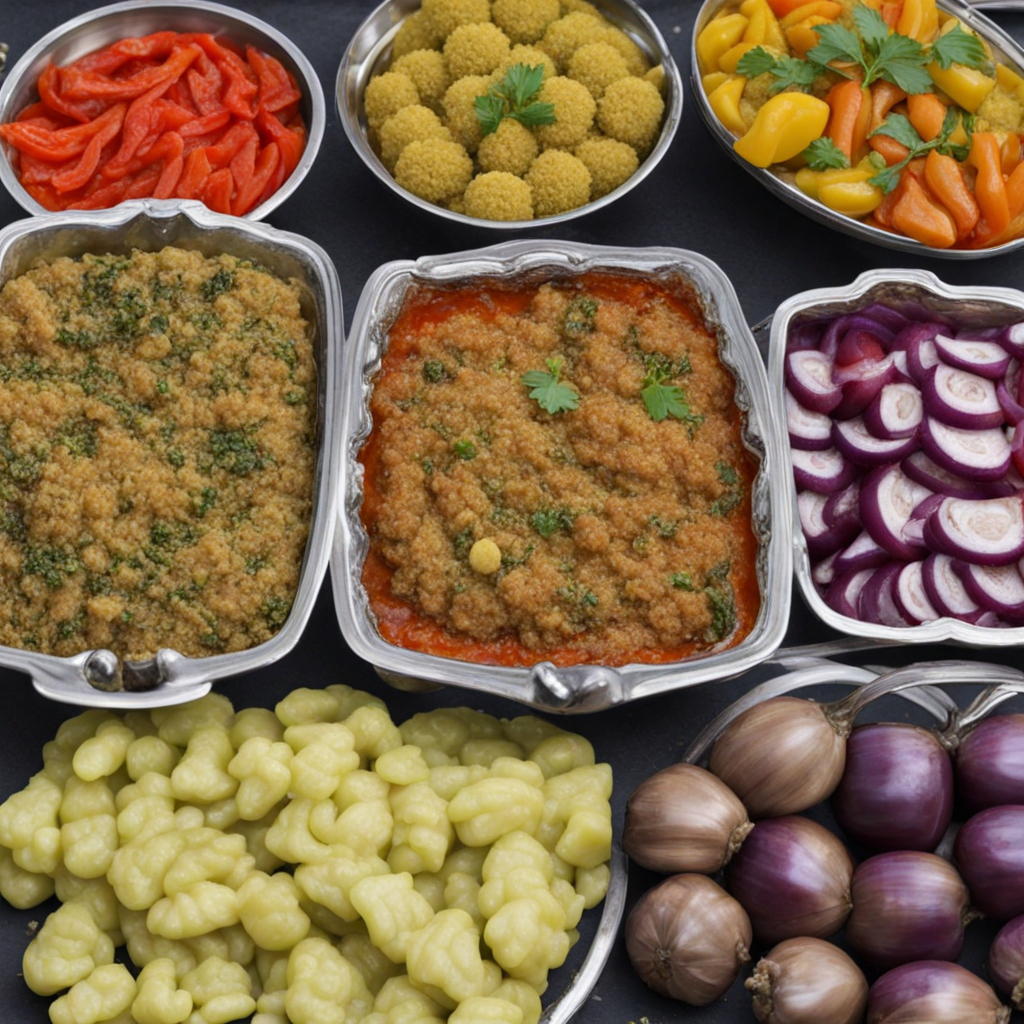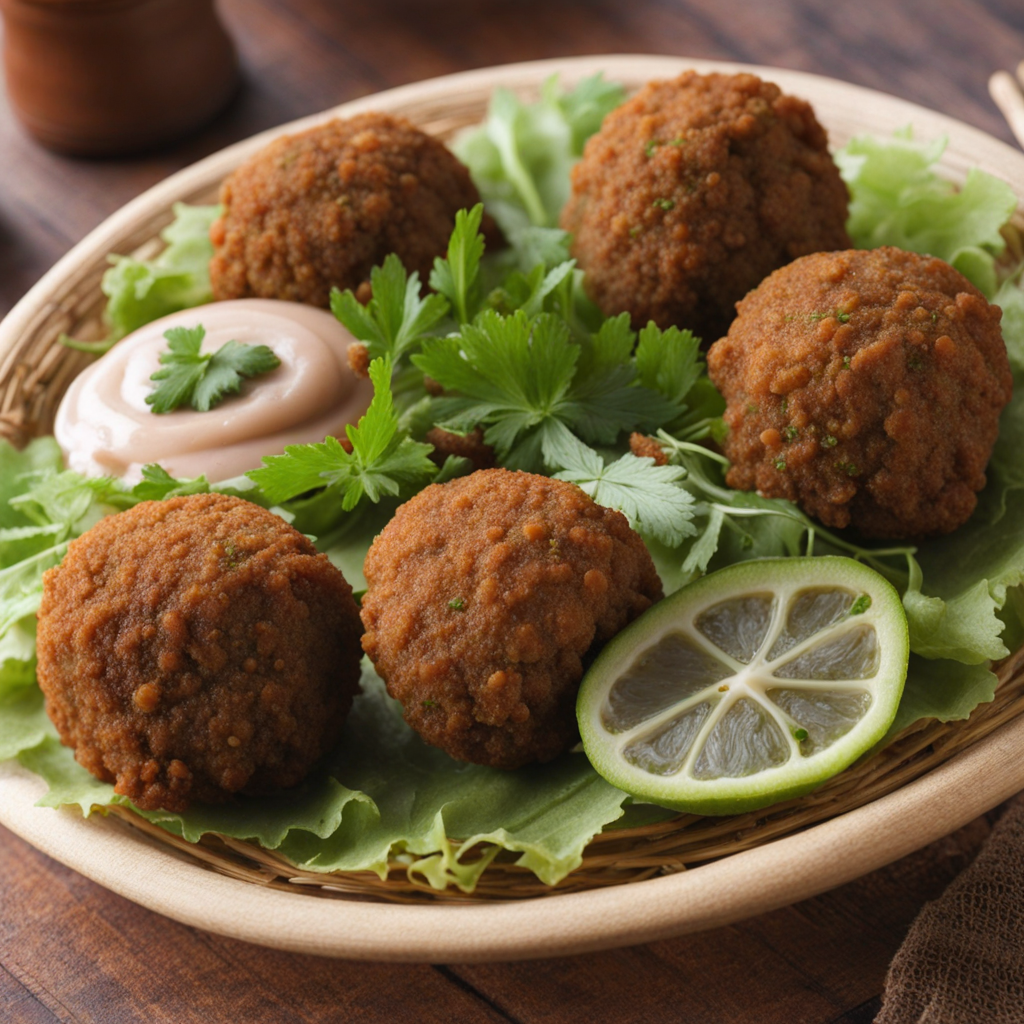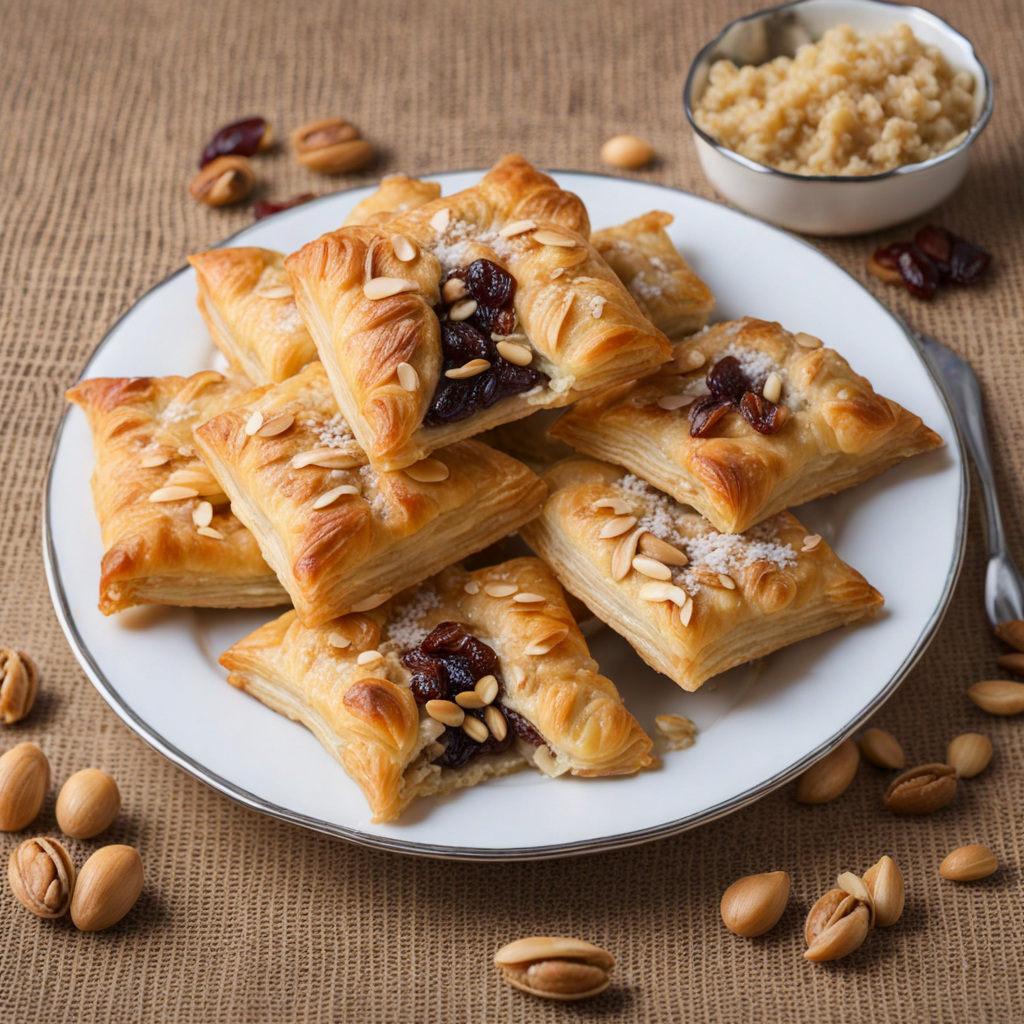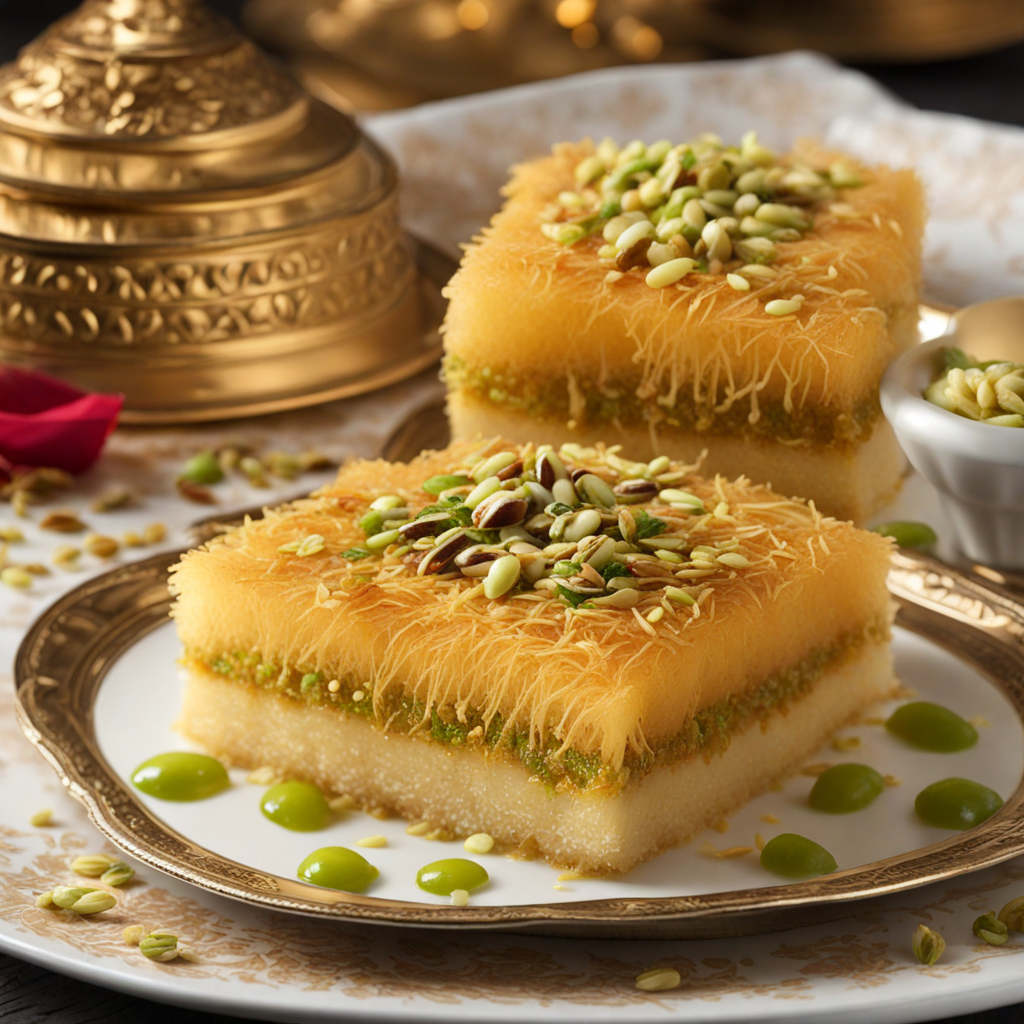Aish Baladi
Aish Baladi is a traditional Egyptian bread that embodies the rich culinary heritage of the country. Made primarily from whole wheat flour, the bread is known for its rustic texture and slightly tangy flavor, which comes from the fermentation process. It is typically baked in a hot clay oven, allowing it to puff up beautifully while developing a delightful crust. The bread is often enjoyed fresh, still warm from the oven, making it a staple at many Egyptian meals. Its unique flavor profile sets it apart from other flatbreads, inviting curious food lovers to explore its authenticity. The versatility of Aish Baladi makes it a perfect companion to a variety of dishes. Whether served alongside classic Egyptian dips like baba ghanoush and tahini, or used to scoop up stews like molokhia or kofta, this bread enhances the overall dining experience. Its thick, chewy texture allows it to hold up well against hearty ingredients, providing an ideal canvas for flavors to meld together. The aroma of freshly baked Aish Baladi wafts through the air, drawing people in and promising a satisfying meal. For those eager to delve deeper into Egyptian cuisine, Aish Baladi offers a genuine taste of the country’s culinary traditions. It is often enjoyed during communal meals, where family and friends gather around the table, breaking bread together—a testament to the bread's central role in Egyptian culture. This bread not only serves as sustenance but also as a symbol of hospitality and warmth, inviting everyone to share in the joy of good food and great company.
How It Became This Dish
The Rich History of عيش بلدي: Egypt’s Beloved Traditional Bread #### Origins عيش بلدي, pronounced "aish baladi," is more than just a staple food in Egypt; it is a symbol of the nation's culinary heritage and cultural identity. The term "عيش" translates to "bread," while "بلدي" means "local" or "country." This traditional Egyptian bread has its roots in the ancient civilizations of the Nile Valley, where bread-making practices date back thousands of years. Archaeological discoveries suggest that Egyptians were baking bread as far back as 2500 BCE, and their methods have evolved over the millennia. The most significant influence on aish baladi comes from the cultivation of wheat, which was first introduced to Egypt around 5000 BCE. The fertile lands along the Nile provided the perfect environment for growing grains, and bread quickly became a staple food. The Egyptians developed various forms of bread, with aish baladi emerging as a ubiquitous and quintessential variety. #### Cultural Significance In Egypt, bread is often referred to as "the staff of life," reflecting its central role in daily sustenance. Aish baladi is not just a food item; it embodies hospitality, community, and tradition. It is typically baked in communal ovens, where families and neighbors gather, reinforcing social bonds. The act of sharing bread is a significant cultural practice, symbolizing unity and togetherness. Moreover, aish baladi plays a vital role during religious and cultural festivities. It is often served during family gatherings, weddings, and Ramadan iftar meals, showcasing its importance in both everyday life and special occasions. The bread is commonly paired with various Egyptian dishes, such as falafel (ta’ameya), grilled meats, and stews, serving as an essential accompaniment that enhances flavors and provides nourishment. #### The Making of Aish Baladi The preparation of aish baladi is an art form passed down through generations. Traditionally, it is made using whole wheat flour, water, and salt. The dough is left to ferment naturally, allowing wild yeast from the environment to interact with the flour. This fermentation process not only contributes to the bread's distinctive flavor but also gives it a unique texture characterized by a chewy exterior and soft interior. Once the dough has risen, it is divided into small balls and flattened into round discs. These discs are typically baked on a hot, flat surface known as a "taboon" or in a traditional wood-fired oven. The result is a crusty, slightly charred bread with a hollow center, allowing it to be easily torn apart to scoop up food or wrap it around fillings. #### Development Over Time As Egypt underwent various historical transformations, so too did the production and consumption of aish baladi. During the Islamic Golden Age, which began in the 8th century, the interactions between different cultures and regions led to the introduction of new baking techniques and flavors. The influence of other Middle Eastern breads, such as pita, can be seen in the way aish baladi is prepared and enjoyed. The introduction of industrialization in the 19th century brought significant changes to the way bread was produced. While traditional methods persisted in rural areas, urban centers began to see the rise of mechanized bakeries that could produce bread on a large scale. This shift significantly altered the texture and flavor of aish baladi, as mass production often prioritized uniformity over traditional techniques. Despite these changes, aish baladi has remained a beloved food among Egyptians. In recent decades, there has been a resurgence of interest in traditional and artisanal food practices, leading many people to seek out authentic aish baladi made using traditional methods. This revival is part of a broader movement toward preserving culinary heritage and promoting local ingredients. #### Modern-Day Aish Baladi Today, aish baladi can be found in various forms throughout Egypt, from bustling street vendors to high-end restaurants. While the traditional version remains popular, chefs are increasingly experimenting with different flours, such as spelt and barley, to create unique variations of the bread. Additionally, modern food trends have introduced flavors such as herbs and spices, allowing aish baladi to evolve while remaining rooted in its historical context. The bread continues to play a crucial role in everyday life, serving as a symbol of resilience and cultural pride. In a world where fast food and processed foods dominate, the slow, artisanal production of aish baladi stands as a testament to the enduring power of tradition. Furthermore, with the rise of the global interest in Middle Eastern cuisine, aish baladi has gained recognition beyond Egypt's borders. It has become an emblem of Egyptian culinary identity, celebrated in international food festivals and restaurants around the world. This exposure not only honors its rich history but also introduces a new generation of food enthusiasts to its flavors and cultural significance. #### Conclusion In summary, عيش بلدي is far more than a mere bread; it is a cornerstone of Egyptian culture and history. From its ancient origins to its modern adaptations, the bread embodies the spirit of the Egyptian people, reflecting their resilience, hospitality, and connection to the land. As it continues to evolve, aish baladi remains a cherished symbol of tradition and community, ensuring its place in the hearts—and stomachs—of Egyptians for generations to come. Whether enjoyed in a bustling market or at a family gathering, the experience of sharing aish baladi is a celebration of life, culture, and the enduring legacy of one of Egypt's most beloved foods.
You may like
Discover local flavors from Egypt


